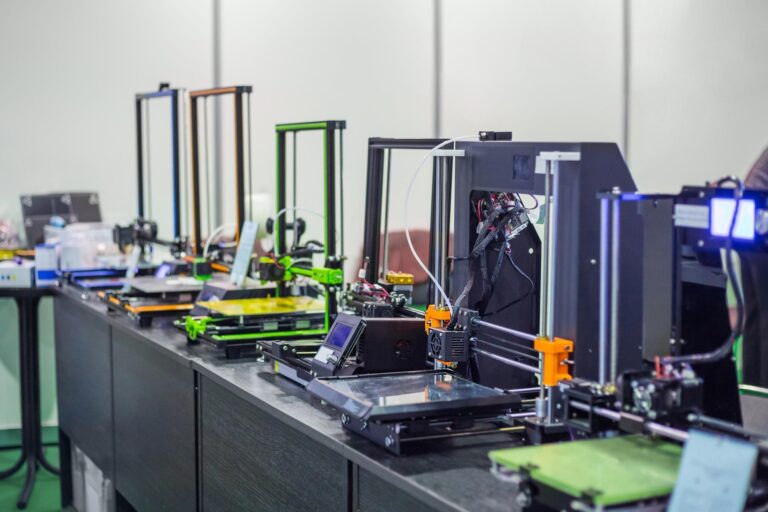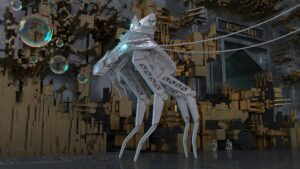Reverse engineering is a process that has been well known for nearly a century. It originated as a way of recreating captured advanced military design during the second world war.
“Instead of designing an object from scratch, reverse engineering is precisely the opposite.”
From the end product engineers work their way to the minutest detail in order to be able to create blueprints and then detailed plans that allow for the production of reverse-engineered objects.
The most important part of this complex and difficult process is that it lets you determine how a certain part was designed. And with that knowledge it is later possible to recreate that part, making it as close to the original as possible. Reverse engineering, however, comes with one disadvantage.
Most objects undergoing this procedure are going to be so complex that the initial cost of the whole process is likely to exceed the price of a new component or that of a different model. Fortunately, once a spare part has been reverse-engineered and a digital copy of the original design is available for a 3D printer, it can be used to make any number of that component.
In the case of additive manufacturing or 3D printing, reverse engineering is an excellent way of providing plans for objects for which those parts are unavailable. Printers, in turn, rely on very precise information in the form of measurements, to be able to create the end product of satisfactory quality.
Various materials used in additive manufacturing allow for a wide spectrum of implementations of this technique. First models of 3D printers were only able to use polymer filaments that were not very durable, and the ready products were not particularly precise so they were mostly used for creating prototypes. In recent years, however, the development of new techniques made it possible to use metals and ceramics as additive manufacturing materials. New printers are also able to use more than one material for a single project, which further widens the scope of their applications.
A clear necessity for reverse engineering of spare parts that are then manufactured with the use of 3D printers is obvious in the automotive industry. Parts that have been discontinued or are very difficult to find can be recreated in a short time, ensuring customers’ satisfaction. Those techniques can also be used in case a custom-designed or modified part is needed. CAD image, the result of a 3D scan, can be used as a base for an upgrade, according to necessity.
Modern-day additive manufacturing allows for a very high level of precision that is required to recreate elements such as interior accessories, housings and mounting brackets, as well as bezels, moulding and even heat resistant parts. It is clear to see that very soon scanning equipment and 3D printing will become a standard in professional garages.
Automotive Industry Embraces the Change
The automotive industry is a great example of how corporations can embrace the latest technologies and use them for their advantage. Early adoption of additive manufacturing was limited to prototyping technologies. However, with the continuous improvements in car technologies and materials used in production, the automotive industry is gradually moving towards increased use of 3D printing.
And while prototyping is still largely done with additive manufacturing, the emphasis is now also put on serial production processes. 3D printing has great potential also when it comes to aftersales and spare parts. Production on demand in this field would greatly reduce spendings for maintaining large quantities of spare parts held in enormous storage spaces.
Key features of additive manufacturing combined with reverse engineering within the automotive industry are:
- the ability of an on-demand production of spare parts that can contribute to substantial savings due to a lesser need for storage space and producing only those parts that are in demand,
- less-expensive mid-series production is now available and easier than ever,
- customized productions, with design tailored to specific customers’ needs
- fast and easy introduction of new designs without the need for changes to production infrastructure, as the same printer can produce a virtually unlimited number of different designs,
- fast prototyping available at a low price, making troubleshooting before production much easier than before.
Additive manufacturing allows for the ability for each object to be produced according to individual requirements. The same printer can make various versions of design with just a different digital plan, with no additional process cost. 3D printing is also great when it comes to making very complicated designs. Until recently some shapes were virtually impossible to produce due to their complex shape or came with a substantial price tag. The development of additive manufacturing allowed for a significant improvement not only in shapes.
“New 3D printers can also use durable and lightweight materials that are very sought-after by companies from the aerospace industry.”
There are various reasons why reverse engineering is a brilliant idea in the automotive industry today. It can solve multiple problems, such as when a product is no longer produced due to being discontinued or due to a manufacturer no longer existing, or when product’s documentation is no longer available, for example, if it gets lost or destroyed.
Apart from that, reverse engineering can be very helpful in the case of analysing the advantages and disadvantages of a design in order to improve its features. It can also be very useful when an old digital model no longer has a potential for modifications or doesn’t support the latest manufacturing techniques. This technique also allows for capturing material properties of a part that is being reverse-engineered.
Another important factor behind the success of additive manufacturing in the automotive industry is the fact that this process is completely tool-less. Until recently, the specialist tool had to be available before starting production, they were usually expensive and prone to failures. 3D printers require no additional tools, even for the most complex designs. As long as the object’s size isn’t too big for the print bed and there is enough material available, one printer is enough to produce just about anything.
Due to recent changes in weather patterns combined with pollution, ecological awareness means that people are now more than ever looking at whether technology is environmentally friendly. Additive manufacturing is an important part of a strive toward a cleaner and more energy-efficient world. 3D printers produce very little waste and improved, more durable materials used for production mean reduced carbon footprint, a great advantage over traditionally manufactured products nowadays. This is extremely important in the automotive industry, where a strain is put on continuous efforts to minimise damage to the environment, not only by means of introducing greener engines.
Wrapping up
There is little doubt that additive manufacturing combined with reverse engineering is the way to go for various industries, especially for the ever-demanding automotive market. Those promising, cutting-edge technologies are a perfect way to satisfy customers’ needs for both old designs, which are extremely hard and expensive to buy, and new, tailored printed-on-demand parts of the finest quality.
As scanning techniques are becoming more precise and 3D printing introduces simultaneous use of multiple materials, the future for those combinations seems to be brighter than ever before.










